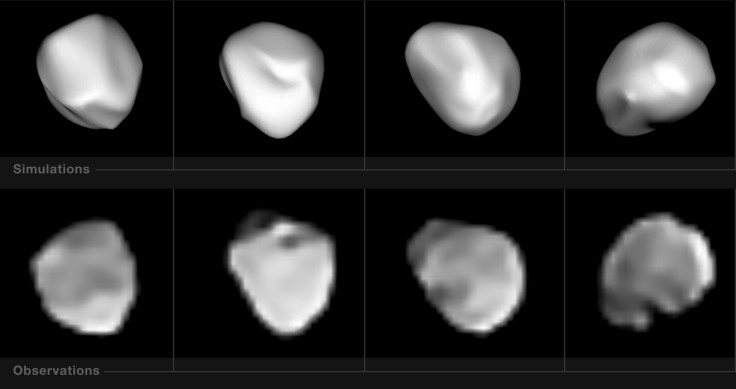Asteroid 6 Hebe Likely Not The Source Of H-Chondrite Meteorites That Hit Earth

At roughly twice the Earth-sun distance, between the orbits of Mars and Jupiter, lies the main asteroid belt — it contains millions of chunks of rock that are smaller than one kilometer (0.6 miles) across. Pieces of rock bigger than that number between 1.1 million and 1.9 million, and among those is 6 Hebe, an asteroid that accounts for almost half a percent of the entire belt’s mass.
Pieces of asteroids from the main belt often break and fall to Earth, objects we are familiar with as meteorites. And 6 Hebe alone has long been thought to be the source of H-chondrite meteorites that make up over a third of all meteorites that fall to Earth. The asteroid is named after the Greek goddess of youth, and the number 6 in its name denotes the fact that it was the sixth asteroid ever to be discovered, on July 1, 1847.
Read: NASA’s Psyche Mission To Metal Asteroid Scheduled For 2022 Launch
A paper made public recently attempted to settle the question by using the European Southern Observatory’s (ESO)Very Large Telescope located at Cerro Paranal in the Atacama Desert, Chile. Specifically, the Spectro-Polarimetric High-contrast Exoplanet Research instrument (SPHERE), which is installed on VLT’s Unit Telescope 3, was used to test the 6 Hebe-H-chondrite hypothesis.
First, astronomers created a 3D model of the asteroid — which has a diameter of 186 kilometers — complete with its craters. To do that, they used the spin data and the 3D shape of the rocky body, as observed by the telescope and the SPHERE camera. The model was checked for consistency against thermal measurements and stellar occultations. Then, using the model they made, the researchers looked for the largest depression on the asteroid’s surface, which could be an impact crater from some collision in the past that created numerous smaller fragments or meteorites.
However, according to a statement Monday by ESO, researchers found the largest depression’s volume was “five times smaller than the total volume of nearby asteroid families with H-chondrite composition, which suggests that 6 Hebe is not the most likely source of H-chondrites after all.”
The researchers also found that the volume of the large depression on 6 Hebe is over an order of magnitude lesser than the volume of the largest depression on Vesta, which is one of the largest objects in the asteroid belt. The Vesta crater is the source for about 6 percent of all meteorites that fall to Earth.
Read: Asteroids In Mars Orbit Are Remains Of A Destroyed Planet
The large team of researchers, made up of members from three continents, published the paper, titled “3D shape of asteroid (6) Hebe from VLT/SPHERE imaging: Implications for the origin of ordinary H chondrites?” detailing their findings. It has been accepted for publication in the journal Astronomy and Astrophysics.
In the paper, the researchers said they will continue to use the same method and instruments over the next few years to collect data for about 40 other asteroids. Such an exercise would provide a rich dataset for the study of the origin, collisions, and evolution of the asteroid belt.
© Copyright IBTimes 2024. All rights reserved.





















